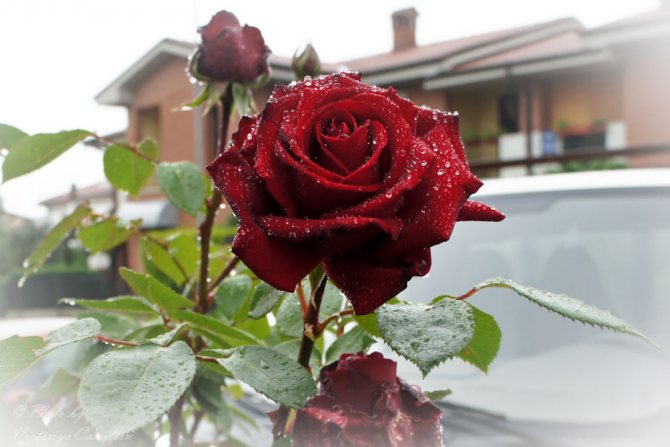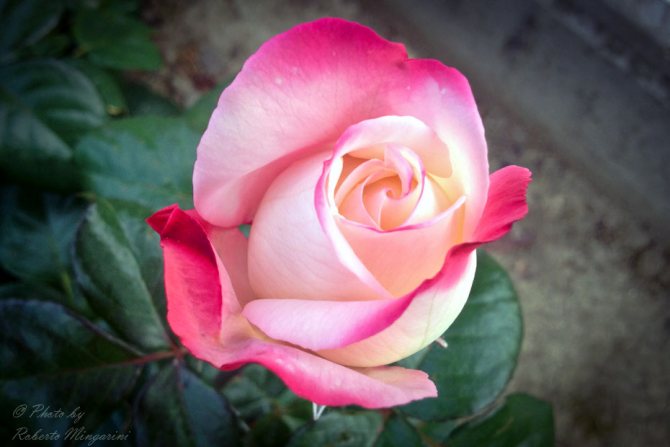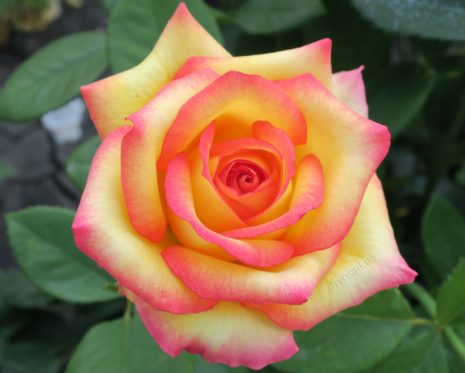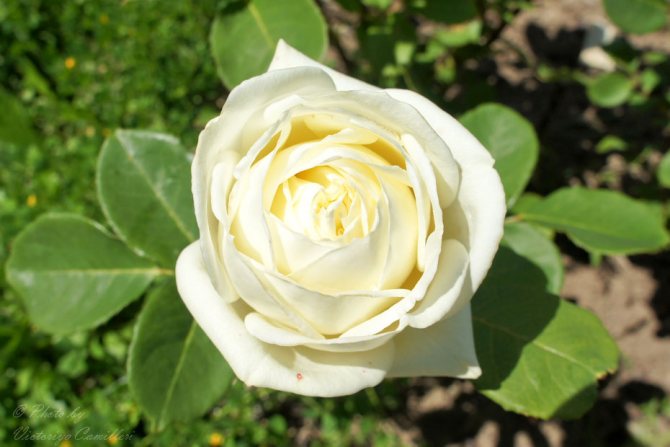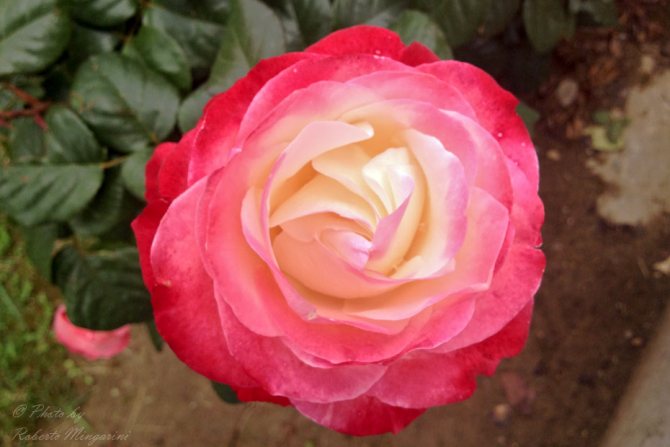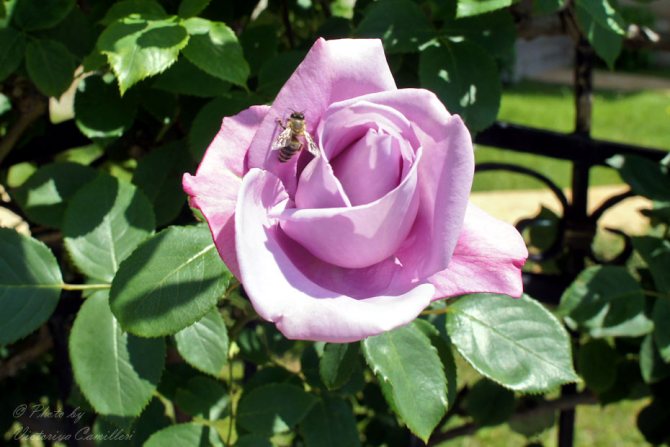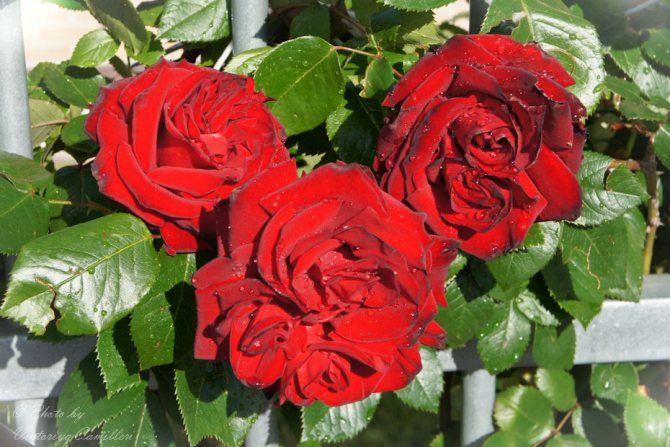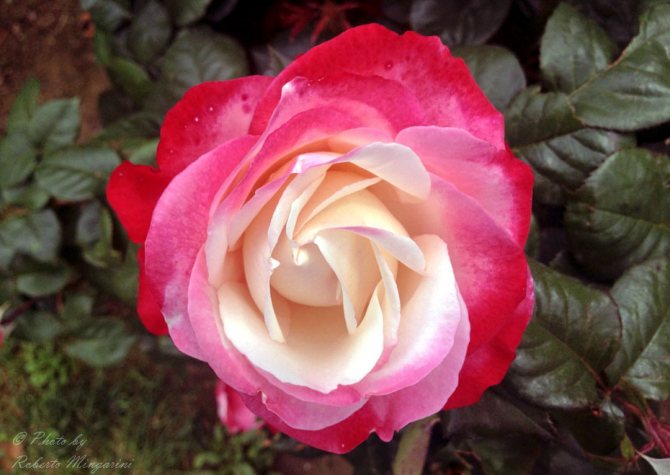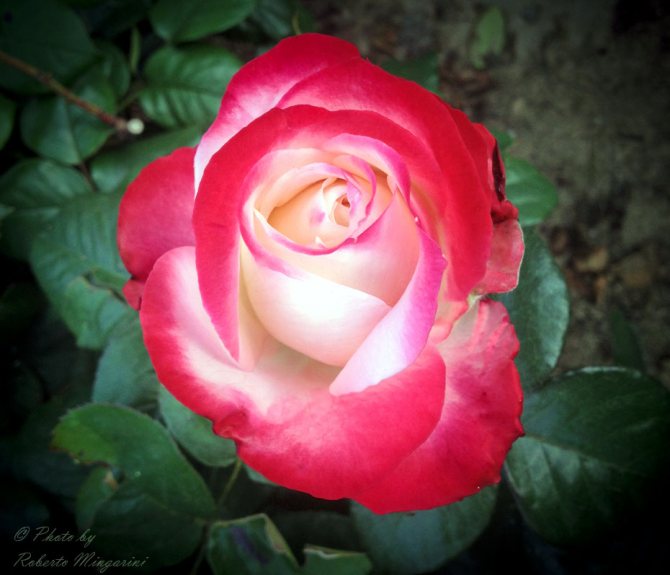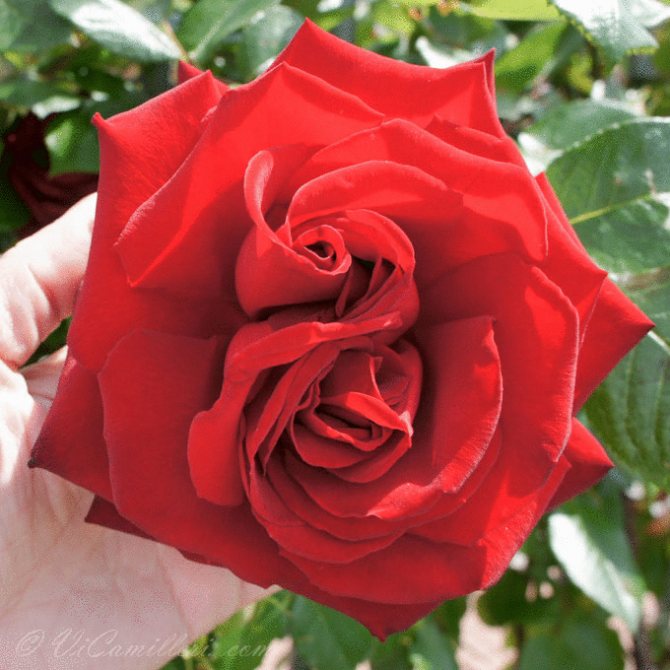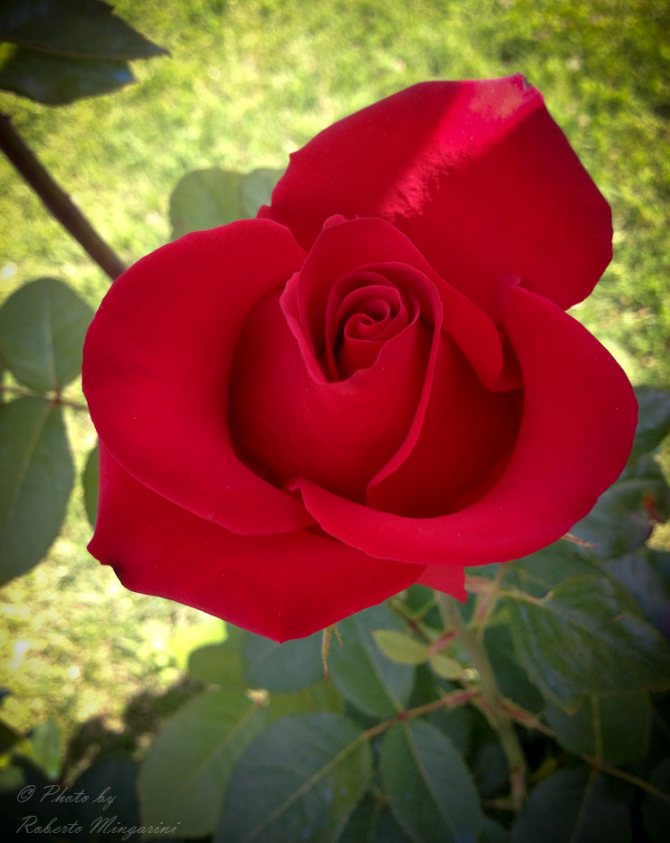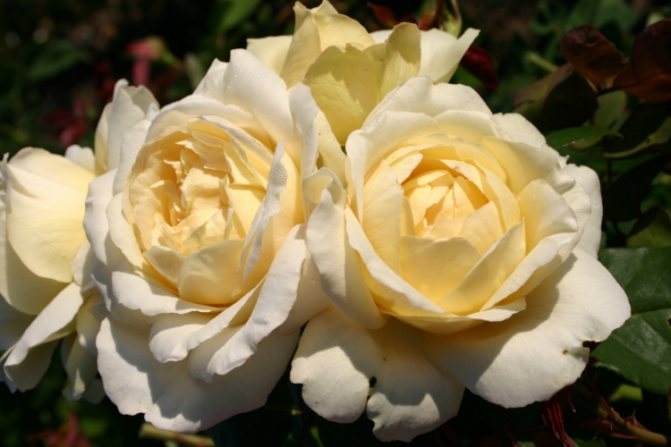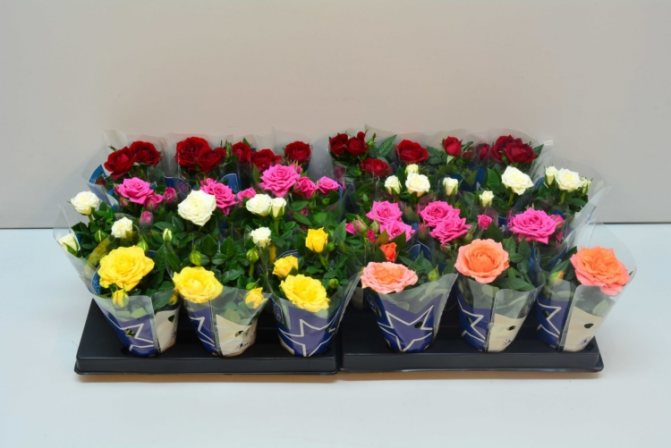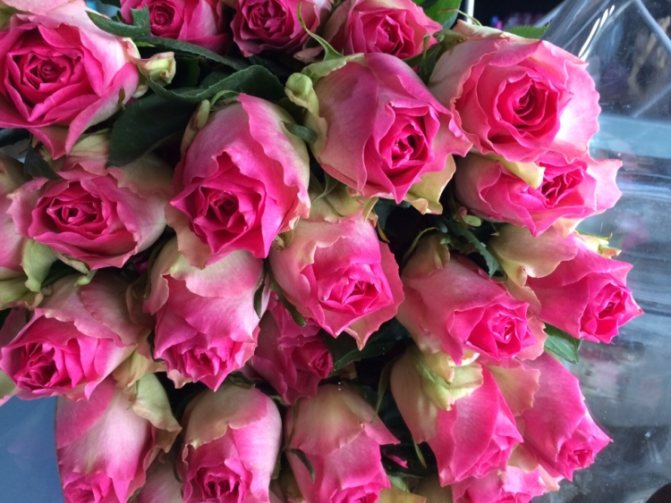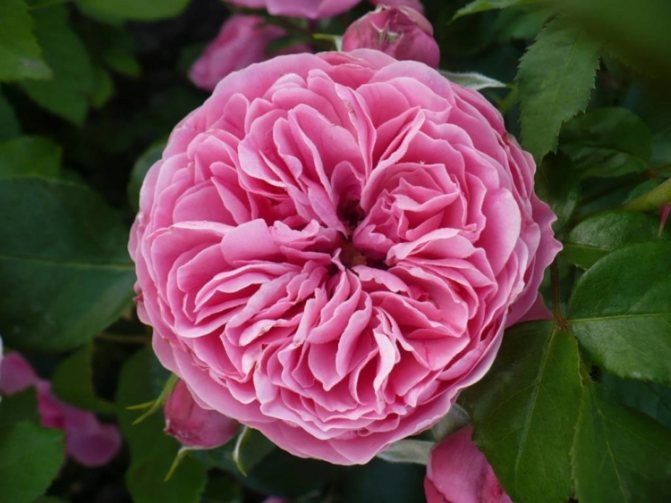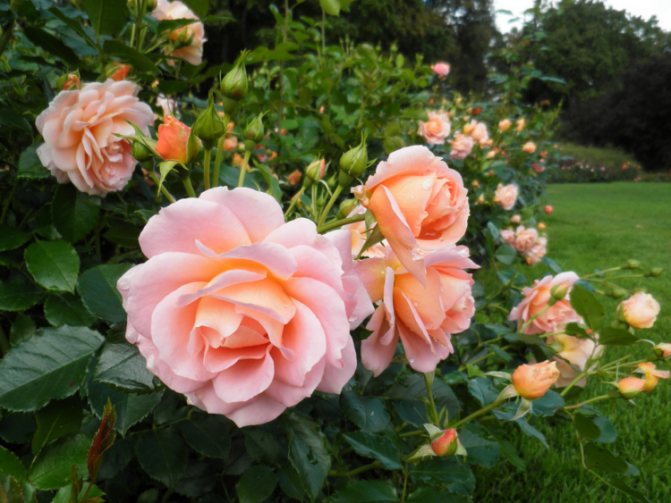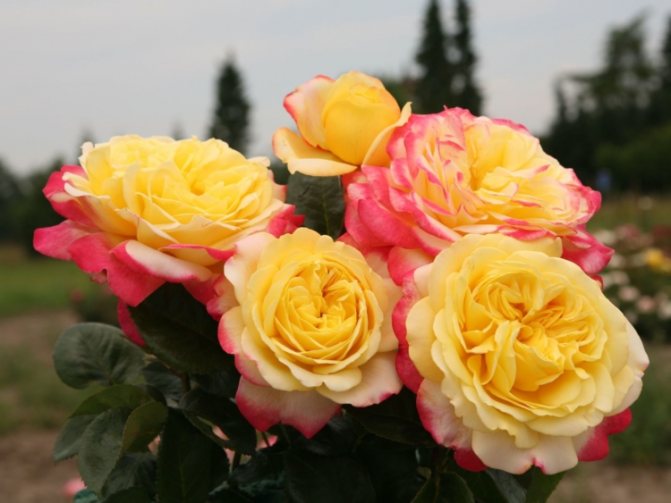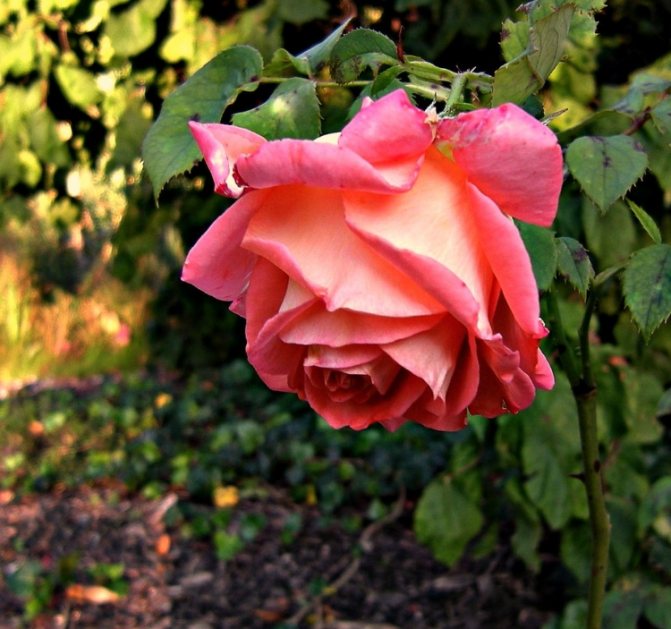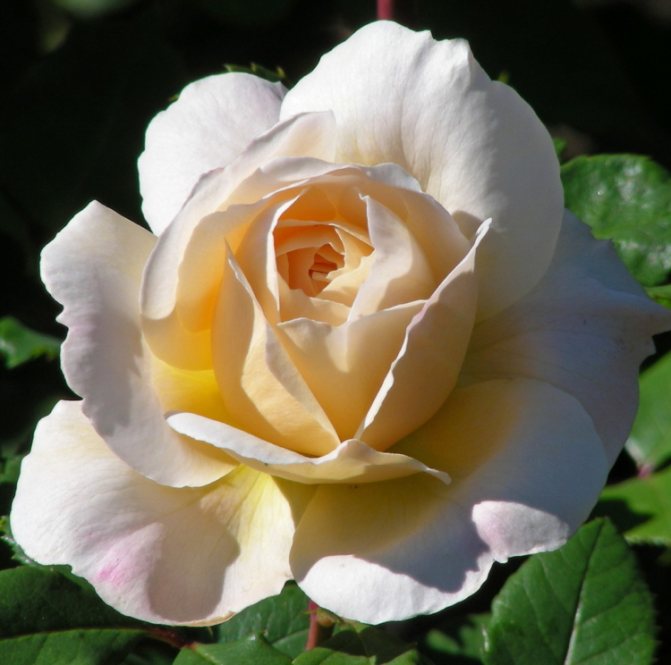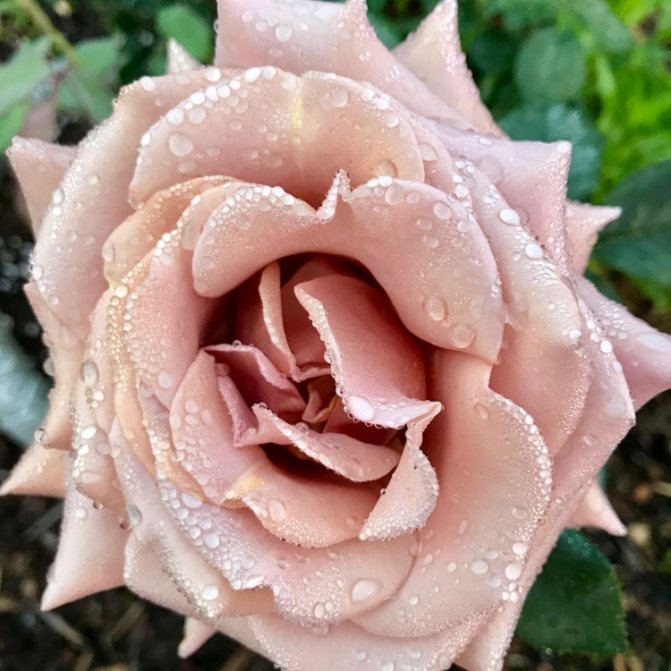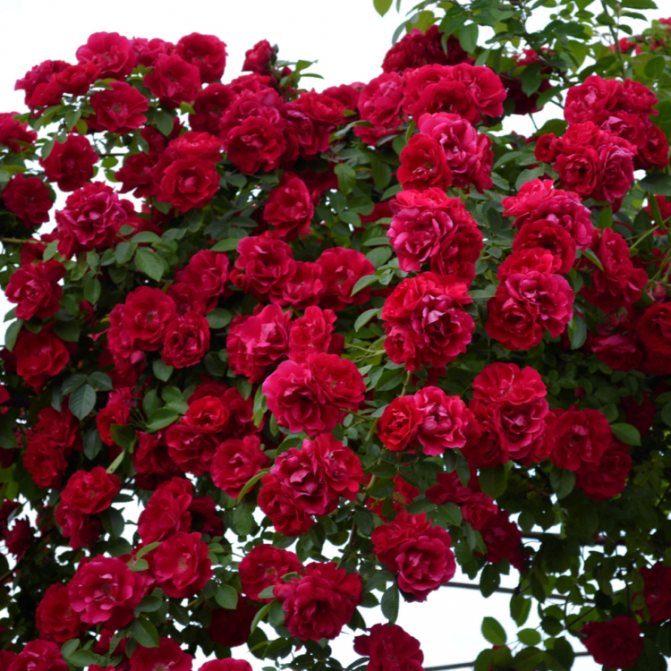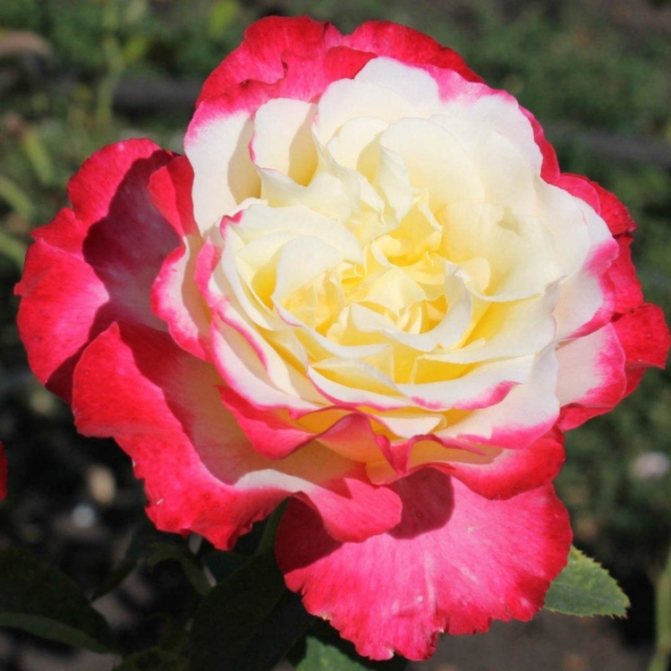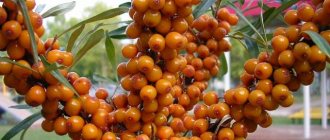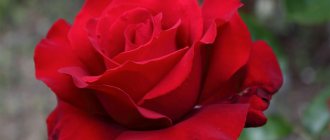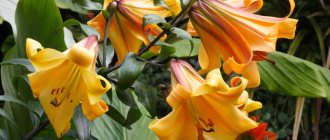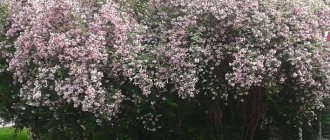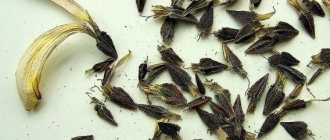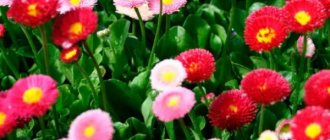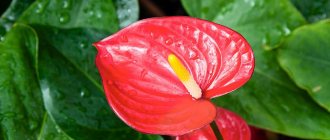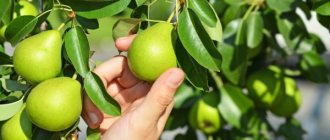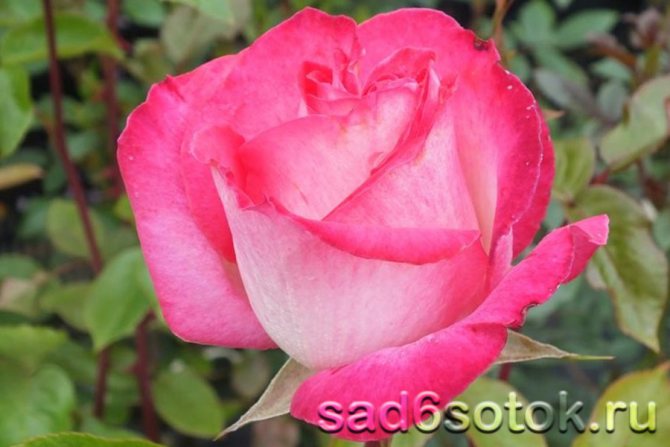
Hybrid tea rose variety Rose Gaujard
The queen of the flower garden, the rose, is incredibly popular due to the long abundant flowering of lush bushes, a variety of shapes and shades. In decorating the landscape, the rose has no equal - these perennials are magnificent in a single planting, in the form of borders and bright flower beds, when decorating vertical surfaces or dividing zones.
Breeders have bred a huge number of varieties, which are divided into types, depending on the size and shape of the bushes, flowering time and size of flowers, their number in the inflorescence. For a successful design of a garden or flower garden, first of all, it is important to decide on the type of rose, and then choose the variety itself.
Few facts from the history of roses
In the writings of ancient Roman historians, descriptions of roses are found more than once, and even then the beauty of this flower captivated many. Rational citizens of Ancient Rome mainly grew useful plants in gardens, but roses also found a place.


After the fall of the great power, roses were mainly cultivated by monks, and in this art they succeeded. It was the monastery gardens that were in the future taken as a model for many parks and gardens of the royal residences of Europe. A little later, varieties from the East appeared on the European continent, and at the beginning of the 19th century - roses from Asia.
The variety of plant species, shapes, color and aroma of buds, as well as a number of characteristics of roses is striking, and this was achieved thanks to selective selection, crossing. There are many classifications, and although all plants belong to the same genus Rosehip, the differences between them are quite significant. One of the most common classifications is the separation of roses according to the characteristics of garden signs. Also, the following characteristics can be selected as criteria:
- color of petals;
- number of petals;
- flower shape;
- leaf shape;
- aroma.
Roses are distinguished according to applied characteristics (among them, for example, potted, cut), according to the place of growth (in the wild, in gardens).
In 1976, the International Society of Gardeners approved a classification that took into account a whole range of biological and decorative characteristics of plants. It is she who is the main one, although adjustments are made to it every year (new varieties and hybrids appear constantly). In our review, the most popular classifications are given, methods of cultivating roses, recommendations for acquiring this culture are also given.
Variety of species
The breeders did not disregard roses and managed to breed a large number of species, including new varieties of garden roses, which differ in the requirements for growing in different territories and are used to create beautiful compositions.
Hybrid tea roses are one of the most popular large-flowered garden roses.
Considering that they began to cultivate the plant for a long time, the classification is considered conditional, since it is difficult to determine the exact belonging: after the flowers passed the period of formation for a long time, they mixed with others.
The following types of garden roses are considered to be the most popular and valuable:
- Hybrid tea.
- Climbing.
- Groundcover.
- Miniature.
- Park.
Shrub roses are represented by a large number of varieties with different characteristics, colors and shapes.
Hybrid tea
This most popular group includes varieties obtained by crossing remontant and tea roses.They inherited fragrant and abundant flowering from teahouses, and from remontant ones - the ability to withstand adverse environmental conditions, resistance to diseases. The first representative was bred in 1867.
These varieties still occupy a leading position, they are used more often than others when creating rose gardens, decorating flower beds, for cutting. Common features for representatives of this group are:
The best representatives of hybrid tea roses are Blue Moon roses.
- branching erect shoots reaching a height of 0.5-2 m;
- dense leaves, glossy or matte, with a rich green tint;
- large buds (7-12 cm in diameter), single or collected in racemose inflorescences, having different shades;
- long flowering period (from June to mid-autumn).
Hybrid tea roses love warmth, are distinguished by increased requirements for location, and are often affected by pests. This species is less winter-hardy than remontant ones, but in the middle lane the plants, with the right shelter, are able to winter well. The best representatives of this group are:
- Double Delight.
- Blue Moon.
- Cherry Brendy.
- Gloria Dei.
- Paradaiz.
- Sphinx Gold.
- Bella Pearl et al.
Floribunda
As a result of repeated crossing of different species (polyanthus, tea-hybrid, Pernetsian, etc.), new varieties of roses were bred, they were officially recognized in 1952, they were brought into a separate group only in 1976. After Floribunda roses became widespread, polyanthus lost their popularity.
The bush garden rose Floribunda is a compact plant, in all respects distinguished by its diversity. On one stem, there are up to 5 large flowers of a beautiful shape (goblet or bowl-shaped), semi-double or double. Several colors are revealed in each brush at the same time.
Floribundas have all the shades inherent in hybrid tea, many representatives have a pleasant aroma as an integral property. Bushes are either short or tall (over 1.5 m).
They are planted along the paths, used in complex compositions, and grown in containers. During the flowering period, garden roses are able to outshine even a flower bed. Sometimes a bole is grafted and grown like a tree.
As a landscape, Floribunda roses can be used for color accents in large and small decorative groups, in rockeries and flower gardens. They can winter well in the climatic conditions of central Russia, they are resistant to many diseases.
It is difficult to list what varieties of this type are, their characteristics are similar, therefore it is more convenient to subdivide them according to shades:
- Golden Vedding.
- La-Paloma.
- Lion-Rose.
- Leonardo da Vinci.
- Gebruder Grimm.
- Pomponella.
- Purpl Tiger and others.
Climbing
Hybrids are created by crossing multi-flowered roses with hybrid tea and North American climbing roses. Their main purpose is to cover parts of houses, gazebos, fences, trellises, pergolas, garden arches, architectural structures, old trees.
Climbing roses are used in landscape design for the design of parks and gardens.
These are perennial vines, reaching a height of 5 m, they are often used in landscape design when decorating parks and gardens, they are well suited for summer cottages. Stems are flexible, creeping, shoots are arched, so they need support.
All varieties are distinguished by continuous flowering, since they have extended budding phases, shoots are formed constantly. On average, it lasts up to 35 days, more often once, but in some species, repeated flowering may be noted.
Flowers are located along branches with small rigid leaves, collected in inflorescences, colors are different:
- white;
- pink;
- red and other shades.
Some representatives have no aroma, others have a weak one. There are 5 types of climbing roses in the group:
- multi-flowered;
- large-flowered (single or few flowers in the inflorescence);
- brush-colored (inflorescences resemble Floribunda roses);
- wild;
- miniature.
This type of rose is frost-resistant; under cover, they can survive the winter cold well. In the harsh Russian climatic conditions, their dignity cannot be fully manifested.
Due to early autumn, the bushes begin to shed their buds and prepare for winter. Not all types of fragile decorative roses are capable of withstanding severe frosts (up to -35 ° C).
Continuously blooming climbing rose varieties:
- Flammentanz;
- Bobbie Jame;
- Laguna.
Climbing small-flowered roses:
- Super Excelsa;
- Super Dorothy.
Climbing large-flowered:
- Santana;
- Polka.
Climbing roses do not retain the ability to bloom again.
Groundcover
Groundcover roses are distinguished by spreading bushes and abundant flowering.
In terms of the variety of forms and types, ground cover roses surpass other groups. Among them there are low-growing representatives with long stems creeping along the ground and higher ones, the stems of which are drooping.
The height of the bushes can vary from 20 to 200 cm, they are divided into 4 subgroups:
- small creeping (30-45 cm high, no more than 1.5 m wide);
- large creeping (from 45 cm in height and more than 1.5 m in width);
- small drooping (up to 95 cm high, about 1.5 m wide);
- large drooping (above 1 m and from 1.5 m in width).
Some have double flowers, others have simpler forms, but this does not make them less beautiful. With external diversity, this group has 2 features:
- abundant flowering;
- the ability to maintain splendor until the fall.
The number of flowers depends on the variety, the diameter is 10-50 mm. This species is distinguished by continuous flowering, frost resistance, and disease resistance. Due to vigorous growth and strong branching, the bushes grow rapidly, their diameter is greater than the height.
Popular varieties of ground cover roses:
- The Fairy;
- Mainaufeuer;
- Hello;
- Ballerina;
- Appleblossom Flover Carpet;
- Amber Cover;
- Swany.
Park
The culture, which has become widely known, has several tens of thousands of varieties. The name is conditional, since the group includes decorative species of rose hips, as well as moss and centifol roses, bred back in the 16th century.
Bushes can reach 1.5 m in height, buds appear early, flowering is abundant and long. The color is different: from white to dark purple, less often you can find yellow or orange colors. One flower has up to 150 petals.
Bushes grow in height and width, so they require spacious plantings.
Shrub rose varieties require shelter because they cannot be cut short or bent down. In the middle lane, species roses close to wild or rose hips may not be closed for the winter.
There are 2 groups of park roses:
- single flowering;
- with repeated flowering.
Those that bloom 1 time need to keep last year's shoots, otherwise they will not bloom. But such varieties are more resistant to cold weather, they do not always need to bend or shelter.
Park rose varieties are more resistant to cold weather.
The blooming group is re-divided into:
- frost-resistant (rugoses);
- cold-resistant Canadian roses;
- in need of shelter.
Representatives of park roses are:
- Hansaland;
- Cardinal de Richelieu;
- Golden Celebration;
- Chloris;
- Remi Martin;
- Scepter'd Isle;
- Martin Frobisher.
Classification of varieties of roses by type of flowers
Roses amaze with the variety of their flowers; it is no coincidence that breeders classify them into groups based on the number of petals, their color, and also their shape.
Division into groups by the number of petals
Simple
The simplest flowers have up to 7 petals, and today these varieties are at the peak of their popularity. They are distinguished by exuberant flowering, endurance, and due to the variety of colors, these roses are increasingly used to decorate parks and garden plots.
Varieties:
- Zen Family series;
- The alexandra rose
- Rose of picardy
- Sommerabend.
Semi-double
These roses have a number of petals ranging from 8 to 20 pieces.
Varieties:
- Blanc Double de Couber (white);
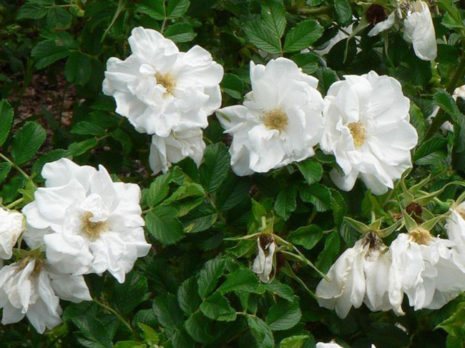

- Pink Grutendorst (cream);
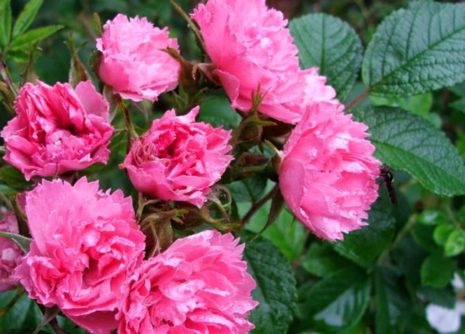

- William Buffin (pink).
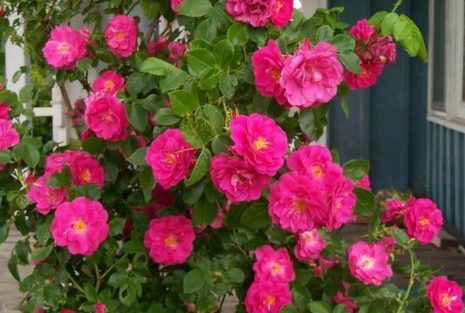

Terry
The number of petals is even greater - from 21. But there is also its own gradation:
- moderately terry (up to 20 petals);
- medium terry (up to 39 petals);
- densely terry (over 40 petals).
Varieties:
- Louis Jollier (raspberry);
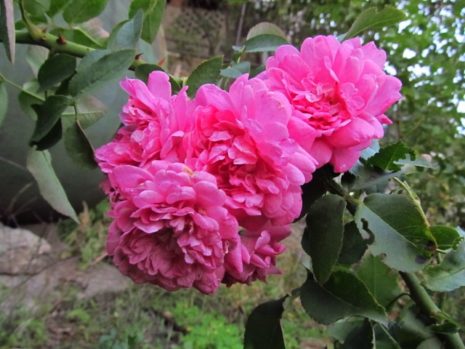

- Good Life (orange with a copper tint);
- Shocking Blue (fuchsia);
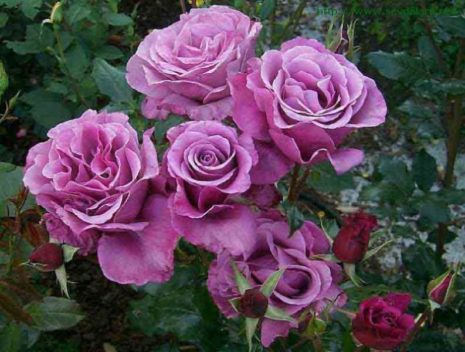

- Cappuccino (cream, yellowish coffee color).
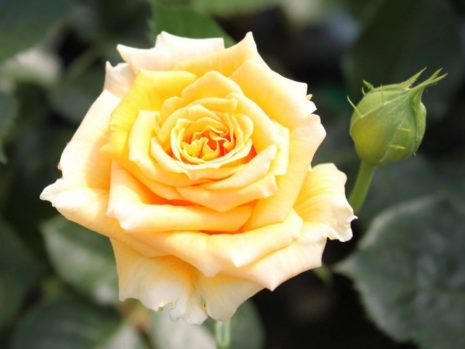

Other types of roses
Breeders have bred over 100 varieties of dwarf roses. They have beautiful little flowers in different shades with or without a subtle scent. Their advantages:
- small bushes (up to 40 cm in height);
- most are frost-resistant, so they can be used as perennials to decorate flower beds;
- are distinguished by long flowering (from May to the onset of frost);
- miniature flowers have different shapes and colors;
- fit well into landscape design, since there are varieties with 1 or more flowers on the stem;
- creeping and climbing types of mini roses with long (up to 5 m) shoots and small (up to 4 cm in diameter) flowers in large numbers are well suited for arches and hedges.
David Austin's shade-tolerant English garden roses can grow in places where the sun is 4-5 hours a day:
- Princess Anne;
- Gertrude Jekyll;
- Gentle Hermione;
- Thomas A Becket;
- Crown Princess Margareta;
- Crown Princess Margareta;
- Teasing Georgia, etc.
Rare varieties of roses:
- Cinco de Mayo. Has an unusual color: rusty orange, and at the end of flowering - an ashy lavender shade. Color depth is enhanced in cooler weather. Spherical bush, leaves are dark green glossy. Light apple aroma, cupped inflorescences with 7-10 buds.
- Osiria. It has an attractive color: velvety dark red petals on the inside and silvery white on the outside. The aroma is strong, blooming from June to late autumn.
- Suntory Apploz. The blue rose created by the Japanese corporation is considered the ideal of harmony and eternity.
- Black Baccarat. Black rose bred by French breeders. The flowers in the buds are black in color, in cool weather they have a black tint.
Roses without thorns are very popular, they are well suited for park and landscape areas. There are almost no thorns on their stems, the thorns are softer, easily deformed.
Division into groups according to the shape of the glass
Roses are distinguished by the shape of the flower, and these are not only familiar and familiar to all glasses, but also cupped, square, in the form of pompons, balls, luxurious rosettes.
Among the most popular are varieties with a cone-shaped center (bent outer petals collected into a single whole - inner ones), cupped (usually double types), flat (simple flowers with a small number of petals).


Magnificent garden decoration
Many landscape designers appreciate the black queen for the excellent opportunity to create amazing flower arrangements with their help.
This luxurious bush has a special place on the site. A large number of large spherical velvety buds of iridescent black looks great in compositions with other types of roses and with other flowers. At the same time, it is very important that these flowers do not crumble for a long time, and do not lose their original freshness.
The black queen is also good in cut: flowers in a vase stand for a long time, fragrant with a delicate, delicate aroma.
Division into groups by color
The fact that roses have a wide variety of colors does not surprise anyone.
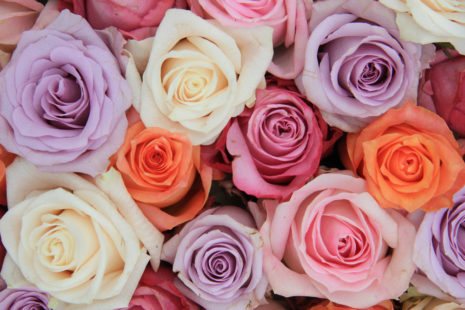

But at the same time, their color can be uneven, which gave rise to one more classification - according to the degree of coloration:
- monochromatic (usually one color - yellow, pink);
- bicolor (petals in the flower are painted in two main shades), varieties: Chicago Peace, Decor Arlequin);
- multicolored (Gloria Dei cultivar);
- mixed;
- painted (Claude Monet, Paul Cezanne Henri Matisse Edgar Degas);
- striped (Crazy One, Marvelle, Abracadabra).
Testimonials
The black queen is a favorite of many flower growers. Both its fragrant aroma and its appearance are very attractive.
Many amateur flower growers, gardeners and summer residents prefer to decorate their plots with roses - flowers with a beautiful appearance that win the hearts of many. Climbing roses are especially convenient in this regard, among which one of the most beautiful is the Black Queen.
The only inconvenience, according to flower growers, is that for the winter the bushes have to be well covered in places of growth with harsh climatic conditions - where frosts reach more than 35 degrees. But this is not so difficult to do.
Division into groups by leaves
Roses are amazing in that they attract attention not only by their color, but also by the beauty of their leaves. Leaf blades differ on the surface (they can be matte, grooved, glossy), as well as in color intensity and color.
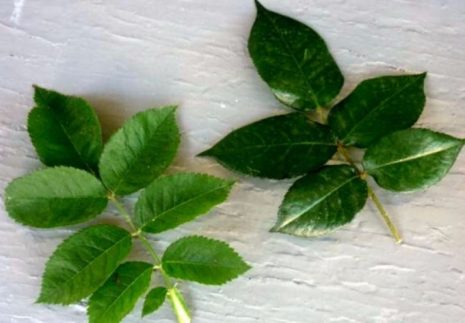

There are varieties with leaves:
- green (all shades, ranging from light to dark, almost black);
- bronze;
- reddish;
- gray.
Roses have been bred, in which the color of the leaves changes during the season: in summer the leaves are green, by autumn they become purple or bluish.
Multi-flowered
The difference between multi-flowered and large-flowered is the absence of inflorescences. Their flowers are smaller and non-double. It happens that it is quite difficult to distinguish them from large-flowered ones. Representatives of this group are:
New Dawn roses bloom throughout the summer.
- Amber Queen. The color is apricot, the bush reaches 1 m in height and 1.2 m in width. Loose clusters contain 3-7 flowers (sometimes more) with a pleasant aroma. Blooms throughout the summer. The leaves are large, bronze at the beginning and dark green further on. In dry, hot weather, it can be affected by powdery mildew.
- Burgundy Ice. A beautiful rose with double flowers (7-8 cm) of a dense plum or deep purple color, 3-5 in inflorescences. The bush grows up to 1.5 m in height and up to 60 cm in width. It is winter-hardy and resistant to diseases.
- Ruffle's Dream. The bush is up to 60 cm high, with small flowers, densely double with a light aroma, wavy cut petals. The color is pink-apricot with a yellow tint. Abundant and multiple flowering.
- Leonardo da Vinci. A dense, sprawling upright bush up to 1.5 m high and up to 1.1 m wide. Young shoots grow up to 90 cm long, hard with reddish thorns. Glossy leaves are dense dark green. Flowers are densely doubled, tightly adjacent to each other. The bud is at first rounded-pointed, in the process of flowering it acquires a goblet shape. The unopened buds are rich crimson, the opened flowers are crimson-pink with a light aroma.
- Eyes for You. The color is pale lilac with a lilac eye. Inflorescences are in buds of 5-7 pcs. The bush is 1-1.2 m high with erect shoots equipped with sharp thorns. Leaves are dark green, medium in size with a slight gloss. Differs in good winter hardiness, can withstand temperatures down to -20 ° C. In regions with harsher climates, shelter is required.
Division into groups by aroma
The scent of a rose is due to the presence of essential oils that secrete the petals of the plant's flowers. There are odorless varieties, you also need to take into account the weather conditions (in bad weather, roses almost do not smell, on a sunny day the smell intensifies).
The spectrum of aromas is huge, while the varieties are classified into the following groups:
- strongly aromatic;
- fragrant;
- slightly aromatic;
- without smell.
The mono smell inherent in the varieties of old roses (Damascus, Alba) is considered a classic. Also bred varieties with fruit, berry, spicy aromas.
The multifaceted aroma of a tea rose is difficult to describe, since it includes notes of fruit, muscat wine, nasturtium, and spices. For mossy varieties of roses, a balsamic aroma (slightly resinous, coniferous) is inherent, but for many varieties of rugoses, the smell of cloves is characteristic.
Features of the
1. This rose variety is grafted on such a wild rose hip, which practically does not give root growth, and therefore, in subsequent years, it practically does not form in the plant.
2. The flowering of the Black Queen begins only from the second year after planting, and always on last year's shoots.
3. Even in black roses, as noted above, the petals have valuable properties that contribute to the healing of various diseases.
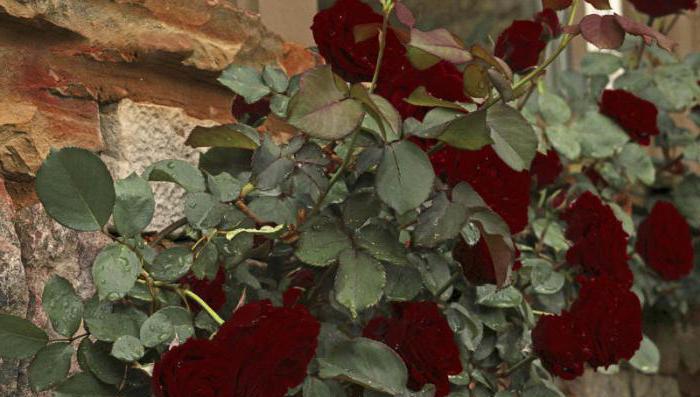

Separation by growing method
Roses need constant care, and one of the most important agricultural techniques is the formation of a bush.
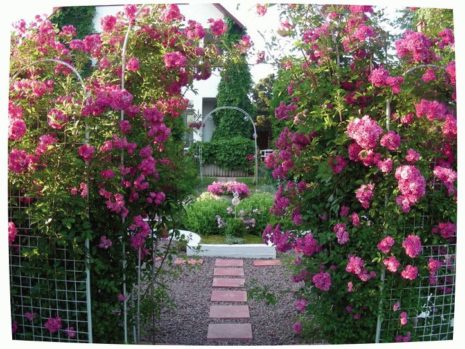

There is a classification according to which crop varieties are divided into groups depending on the growing method:
- climbing (need support, garter);
- stem (usually the height does not exceed 100 cm);
- low stem (up to 30 cm);
- weeping bole (shoots are lowered freely downward);
- creeping species (cover part of the land);
- bush (miniature, dwarf, ordinary);
- column varieties (up to 2.5 meters in height).
Large-flowered roses
Large-flowered varieties of roses have elongated buds and large flowers. They have large bushes that require pruning to get a beautiful shape. At one time, breeders were focused on the shape and size of flowers and paid less attention to the nature of growth and the presence of aroma.
Large-flowered plants now have a pleasant aroma and are resistant to common diseases. The most popular representatives of this species:
New Dawn roses are hardy and undemanding to care for.
- New Dawn. Climbing large-flowered rose, bred in 1932 in Australia. It is very popular in the world. A branchy bush grows up to 2.5 m in height, vigorous curly shoots, with thorny thorns. Glossy green leaves of medium size. The shape of the flowers is similar to hybrid tea, pleasant aroma. The plant is hardy, undemanding to care.
- Dame de Coeur. A hybrid tea rose with beautiful large cherry-red flowers and a pleasant aroma. Flowers are cup-shaped, densely double, up to 15 cm in diameter; cut flowers can stand in a vase for a long time. Tall varieties (up to 120 cm) with long shoots. It can bloom again, resistant to powdery mildew and black spot.
- Alexander. Also tea-hybrid, with red-orange flowers. The bush reaches a height of 2 m, a width of about 1.2 m. After the first single flowering in clusters, there are up to 7 pieces. Blooms profusely, disease resistant.
The most beautiful varieties of roses:
- Chicago Peace;
- Mrs Oakley Fisher;
- Corrie;
- Just Joey;
- Peace;
- Pascali and others.
Large-flowered species with a shelter tolerate cold well, are resistant to many diseases.
Recommendations for choosing and buying rose varieties
Even experienced gardeners are lost from the variety of varieties of this wonderful flower, let alone beginners. How to choose the right rose seedlings and what to look for?
- Seedlings are purchased in stores or specialized nurseries. It's good to find out about the reputation of the company, find reviews of real buyers who have already used the services of sellers.
- Buying roses with an open root system. It is advisable to buy bushes of three years of age, which have a well-developed root system. The plant should have at least 3-4 shoots, the height is about 25-30 cm.
- Purchase of closed-rooted roses (in bags). Shoots should be healthy, solid green, free from damage and plaque. The roots are straightened before planting.
- Purchase of closed-rooted roses (in containers). Such roses are planted in the ground at any time of the summer season. Shoots should be undrawn, with a dark green bark. At the grafting site, the bark should be dense, without detachment.
- Pay attention to the labeling of the varieties, as this is an indicator of the color of the rose flowers.
- Usually, seedlings are bought in advance, but the period should be moderate. At most - two months, it is impractical to purchase roses earlier. They can be stored before planting in the basement, cellar, and also planted in pots.
- When planting, the roots are freed from packaging (unless this is a special mesh that dissolves in the soil).
- If the shoots of the rose are covered with wax or paraffin, it is recommended to remove the cover.
- The buds on the seedlings should be tight, slightly bent.
Beautiful and luxurious roses will decorate any garden. Achievements of modern breeding make it possible to choose a variety suitable for the climate conditions of a particular area, the main thing is to take into account the peculiarities of the species and know agricultural technology.
general information
Climbing roses have no official classification, they do not stand out in a special plant family or genus. They represent only species and varieties of wild roses, rose hips and garden roses. Their distinctive feature is long shoots.
Climbing roses are subdivided into climber, small-flowered and large-flowered. By growth, the following bushes stand out: semi-climbing with shoots up to 3 meters long, climbing (from 3 to 5 meters), curly with a length of 5 to 15 meters.
Compared to regular roses, they are a little more difficult to care for. It should be remembered that for the correct cultivation of such roses, it is also necessary to cut them in a timely manner and correctly. Mistakes can be fraught with the fact that the climbing rose will not bloom.
These roses are quite good in vertical landscape gardening, they are magnificently decorated with gazebos, balconies, pergolas, arches and columns.
Many varieties continuously give new shoots and buds, therefore, their flowering can continue continuously (1-3 months). These include the below presented Black Queen. And flowers that bloom almost all summer are the most desirable and beloved in any garden and park.
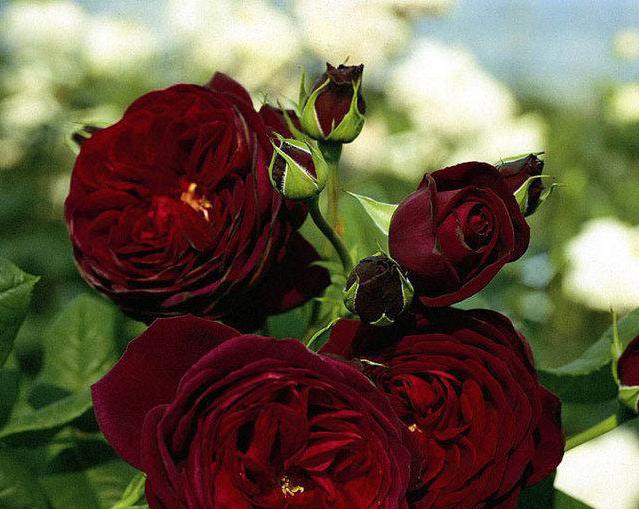

Climbing
Climbing roses, which rarely bloom in the first year of life, are the result of crossing several species. This is how an amazing decoration for vertical gardening appeared in landscape design, allowing you to decorate buildings, terraces, gazebos, pergolas and fences, and create hedges.
Popular varieties:
- Hella is distinguished by abundant flowering, strong bushes up to 3 meters and flexible shoots, perfectly braids all kinds of arches. Snow-white semi-double roses are collected in dense brushes.
- Camelot - very resistant to disease variety, frost-resistant and strong. Branched bushes bloom in large, pale pink semi-double inflorescences with a citrus aroma. The first wave will be the most abundant, followed by a slightly weaker flowering.
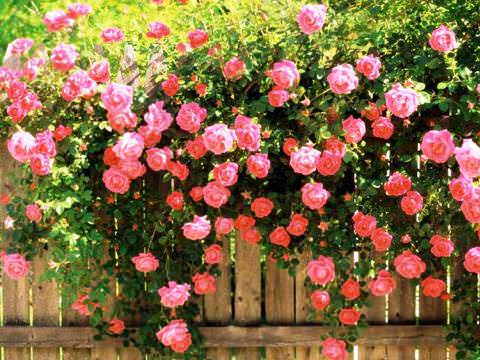

- Cascading shoots Bobbie James (Bobbie James) with creamy white clusters of roses reach 5-10 meters, has a rose hip aroma.
Benefits and Applications
The climbing rose Black Queen is not only a beautiful decoration of the land, the culture has a number of useful and medicinal properties. Since the petals have anti-inflammatory properties, they are actively used to heal small wounds on the body. During bronchitis, the petals are used to prepare medicinal decoctions. In addition, the infusion, prepared on the basis of the Black Queen climbing rose, perfectly helps to cope with headaches. Also, the plant has found wide application in cooking - it is used to make jam, liqueur.
Advice! If you plan to use a climbing rose for treatment, then it is recommended to collect raw materials after the morning dew has dried on the buds.
Wrinkled
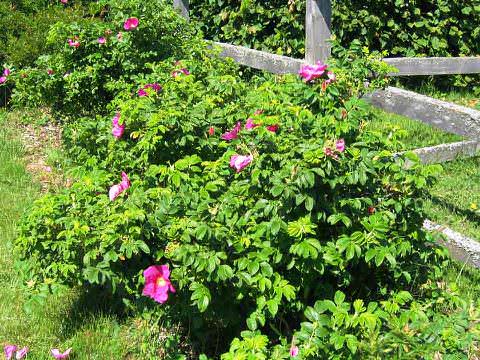

Erect bushes, which can be adjusted by pruning, reach 1.5 m. Terry inflorescences, also called cloves, crimson-red, bloom with cute bouquets. They freeze slightly only in the most severe winters.
There are incredibly many types and popular varieties of roses. Also known are damask roses, which have long been cultivated in the Middle East. One of the varieties, the Kazanlak rose, is a source of rose oil.
Moss roses are the unexpected result of a random mutation of an unknown variety, their pedicels and sepals are covered with sticky hairs, but they have already lost their former popularity. Eglantheria roses are also rarely grown, like bourbon roses. Only a few varieties of noisette roses with silky petals have survived to this day.
Did you like the article? Vote! Rating 5.00 [2 Vote (s)]
Features of growing hybrid tea roses
The flowering period usually begins in early July. Varieties that are resistant to low temperatures decorate the area until the first frost. Varieties with reduced winter hardiness need insulation. When growing roses, agrotechnical procedures must be carried out in a timely manner. Otherwise, it will be quite difficult to avoid problems.
Hybrids are propagated by grafting and grafting. When choosing the latter option, more abundant flowering is observed. The plant needs regular watering, feeding and pruning. Another mandatory item is the prevention of fungal diseases. We must not forget about parasites.
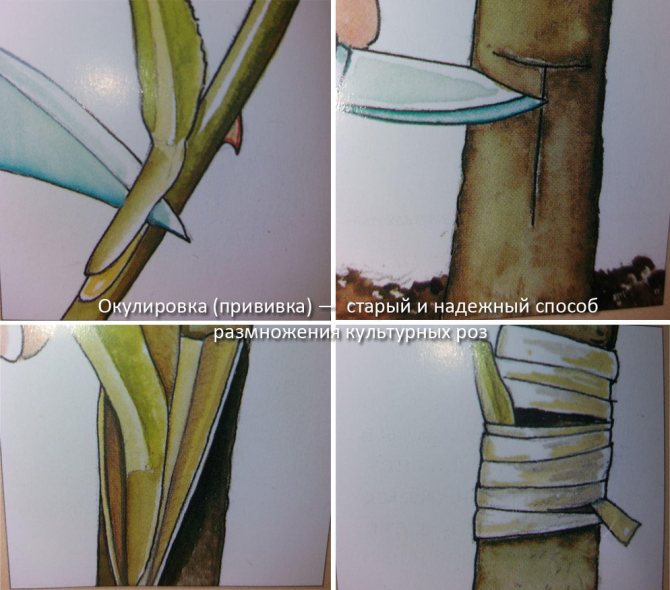

Not all hybrid tea roses can be grown in the garden.Varieties that are too demanding on growing conditions are called show varieties. Landing them in open ground often does not pay off. Roses, which are classified as hybrid tea, are considered the most popular. They are often used to create mixed compositions.
Shrub roses (park or shrub)
Shrub varieties of this group are sometimes called modern park varieties, including roses that cannot be attributed to other categories. They bloom for a long time, until autumn, in several stages. Some varieties are tall, two meters in height. They grow very quickly, and often the branches need support.
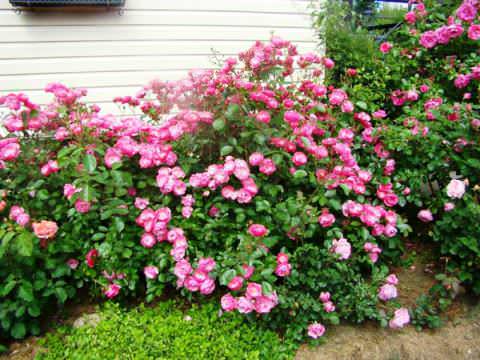

For the winter, they need only a light shelter, and Canadian roses (John Cabot and Champlain, etc.) are not afraid of even the most severe frosts. The main thing is that shraba roses are completely undemanding, so even amateurs can grow them.
Selection criteria for growing in Siberia and the Urals
Siberia and the Urals are characterized by a spring that starts too late, a winter that is harsh in nature. Warm days are not so frequent here and they do not last long.
In order to withstand harsh weather conditions, plants are needed that are adapted to such conditions, namely those plants that were grown in a given climatic region.
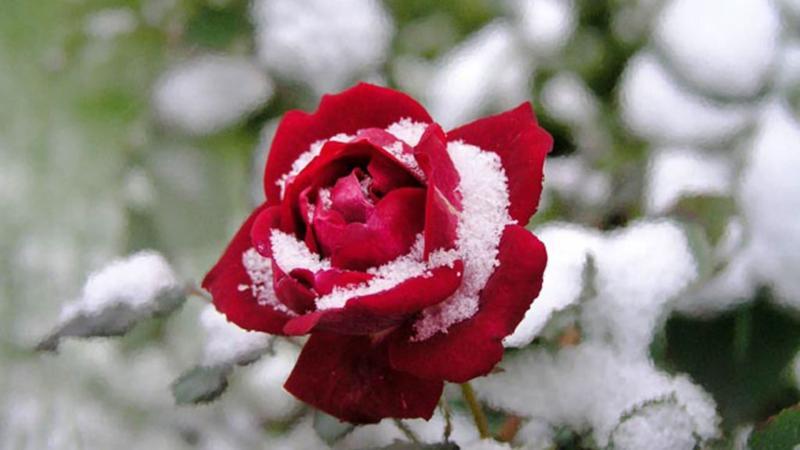

Growing frost-resistant roses in Siberia and the Urals
The second rule is to grow Canadian roses. The climate of the country where these frost-resistant roses are grown has the same climate as the country of Russia. It is preferable to buy flowers of the Canadian variety not on the market, but from a reliable supplier.
Note! Another criterion that must be adhered to is vaccination.
It was found that flowers grafted in the Urals (and in Siberia) had the most favorable wintering. They do not freeze due to increased immunity. In order for the plant's immunity to be increased, it is grafted with another plant that has a much more hardy immunity. In this case, the stock for a rose is in most cases a rosehip.
Important! A flower for planting in Siberia and the Urals must have high winter hardiness, resistance to diseases and pests.
The area for wintering must be prepared in advance. The hilling of the land where the flowers are located is carried out, as well as additional shelter. The plants are covered with spruce branches, foil, roofing felt, and then covered with snowdrifts on top.
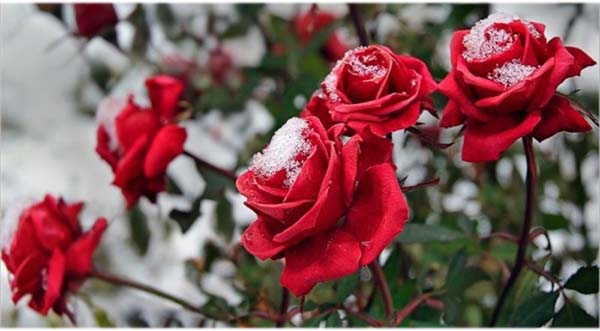

Roses grafted in the Urals (and Siberia) have the most favorable wintering
Another way to ensure a favorable wintering in Siberia and the Urals is to cover the flowers with a box. A properly covered bush will overwinter well, and airing the plant before the onset of cold weather will not be a problem. It is necessary to select a cardboard box that is a suitable average size and cover the cut seedling with it. The top of the box is covered with plastic wrap to prevent the box from getting wet.
Choice
What should you look for in the first place when choosing a variety?
Most often, amateur gardeners acquire this or that variety, captivated by the beauty of the flower and focusing only on its shape, size and, of course, color. This approach often turns into disappointment: it turns out that the rose you like does not winter well, blooms poorly and is affected by various diseases.
The first thing to focus on when choosing roses for a garden plot located in central Russia is the resistance of the variety in our climatic conditions. A strong bush with beautiful healthy foliage makes a much greater impression in the garden than a couple of stunted twigs, even with the most beautiful flowers.
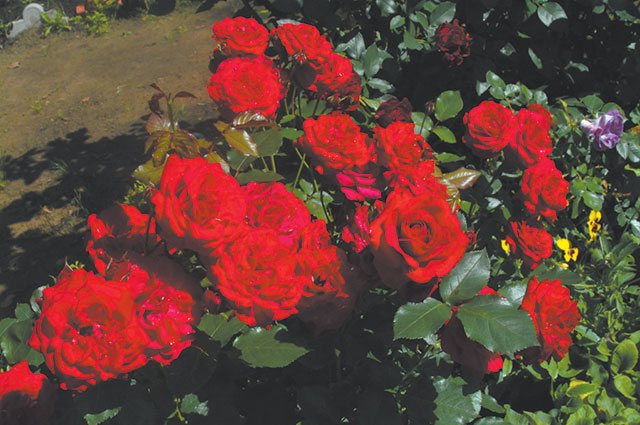

‘Nina Weibull’. Photo: From personal archive / Maria Shavykina
Good guidelines when choosing a variety are the quality marks recognized by the world rose community: the German ADR certificate (these letters stand for Allgemeine Deutsche Rosenneuheitenprufung - a recognized German rose) and the English trademark Gold Standard® Rose.They are assigned only to varieties that have undergone rigorous tests of the comprehensive resistance assessment programs in vivo. These signs are usually found on the tags that are given to the plants when they are sold.
Another criterion that helps to make the right choice is the producer, whose varieties have managed to show themselves well in Russian gardens. First of all, these are German nurseries Kordes (W. Kordes' Söhne), Tantau (Tantau Rosen) and Noack (Noack Rosen), English - Harkness (Harkness Roses) and David Austin (David Austin Roses), as well as French Meilland (Meilland International ). The name of the cattery must be indicated on the label.
The “date of birth” of the rose also deserves attention: modern varieties not only bloom more luxuriantly and longer than their older companions, but are also much more resistant to fungal diseases. Unfortunately, this information is not always available to the general buyer: sometimes it has to be searched for on the Internet.
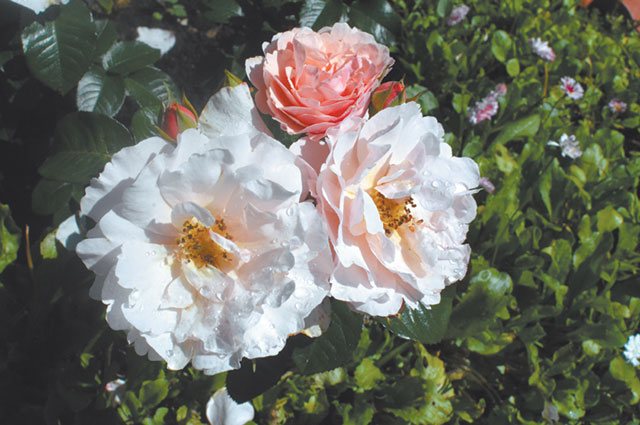

‘Twiggy’s Rose’. Photo: From personal archive / Maria Shavykina
Why know which garden group a rose belongs to?
The belonging of a rose to a particular garden group first of all gives an idea of how it looks and, accordingly, how best to use it on the site. Some varieties will be good in regal loneliness in a ceremonial flower bed, others are suitable for planting in mixed flower beds, and others for decorating an arch, pergola or gazebo.
In addition to external differences, roses from different garden groups react differently to unfavorable climatic conditions, weather anomalies and, of course, winter. They often require different types of care. This mainly concerns pruning and shelter for the winter. Therefore, information about which garden group the rose belongs to is of an important practical nature and is usually indicated on the label.
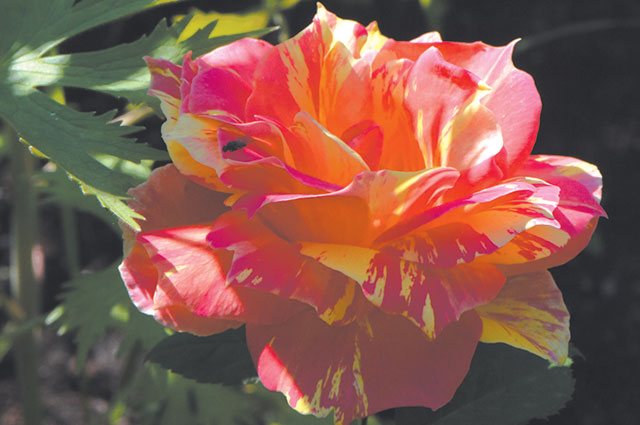

‘Paul Cezanne’. Photo: From personal archive / Maria Shavykina
Repaired
A group that has become a transition from ancient varieties to modern varieties. It dominated for about 70 years, but was gradually replaced by hybrid tea and floribunda. In total, there are about 4 thousand varieties. Strong bushes above 1.5 meters with dense double flowers from snow-white to scarlet shades bloom most densely in spring.
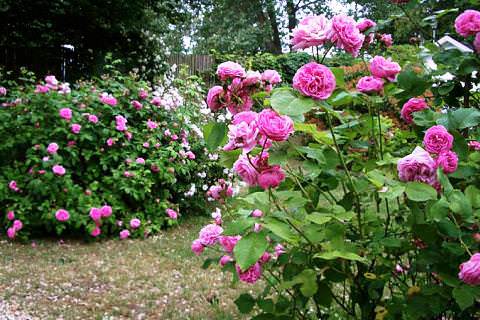

Popular varieties:
Georg Arends satin pink, Paul Neyron with cupped inflorescences, George Dickson with crimson flowers.
Grandiflora
Bred in the 50s. Representatives of this group are suitable both for decorating the site and for cutting or forcing. The flowers are similar to hybrid tea, but these varieties are more winter-hardy and tall - up to 2 meters.
Varietal forms:
- “Komsomolsky light” is recognizable by its red velvety flowers with a golden center, spreading bushes, one meter in height.
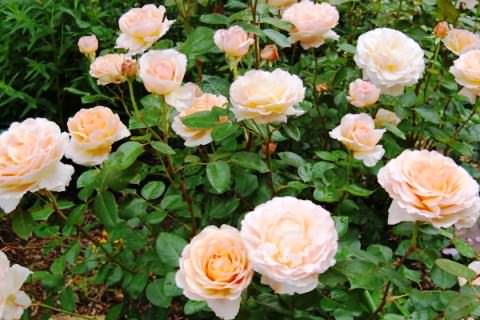

- "Lion" with an unusual color, inside the petals are scarlet, outside - white-silver, goblet inflorescences.

